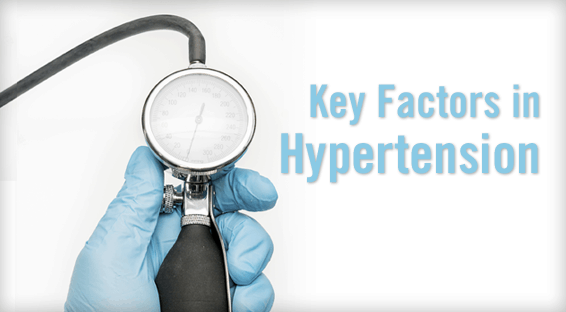Hypertension is a well-known and treatable risk factor for heart attack and stroke, but research suggests that many hypertensive adults have poorly controlled blood pressure (BP). “Among those who know they have hypertension, many are not likely to have it under control,” says Uchechukwu Sampson, MD. “This is concerning, considering the progress that has been made with access, availability, and affordability of treatment options.”
Studies suggest that lifestyle and socioeconomic status play a role in the prevalence of hypertension. “It’s important to evaluate factors associated with hypertension across races and ethnicities to understand the gravity of the problem,” Dr. Sampson says. With that in mind, he and his colleagues conducted a study—published in Circulation: Cardiovascular and Quality Outcomes—that looked at the prevalence and factors associated with hypertension. The analysis consisted of 69,211 participants from the Southern Community Cohort Study. Participants lived in the southeastern U.S., an area known for high rates of heart disease.
Important Findings
According to findings, the overall prevalence of self-reported hypertension was 57%, and more than half of blacks and nearly half of whites had uncontrolled BP. Participants who were extremely obese, defined as having a BMI higher than 40 kg/m2, were more likely to have high BP levels than others. “Black women were key drivers of the observed racial differences,” says Dr. Sampson. Similar findings were observed among those who did not report a history of hypertension. Nearly one-third of blacks and nearly one-quarter of whites had high BP but were unaware of it.
“Among patients with self-reported and ascertained hypertension who indicated that they used an antihypertensive agent, only 44% were on two or more classes of these drugs, and only 29% were on a diuretic,” Dr. Sampson says. “This suggests that guidelines on which drugs to use first and when to add drugs to further manage BP are not being followed optimally.” These findings occurred despite similarities in socioeconomic status. Factors associated with hypertension were age, BMI, diabetes status, high cholesterol, and a family history of hypertension. Education and income were inversely associated with hypertension.
More Research Needed
Dr. Sampson’s study supports other analyses indicating that hypertension continues to plague adults in the U.S. “Although BP is typically monitored during routine office visits, more vigilance is needed by physicians,” says Dr. Sampson. “We should inform patients of their BP readings and let them know immediately if it’s controlled well enough or if patients should be doing something to get it under control. Further investigations are warranted to better understand why so many people are not getting guideline-recommended BP therapies. Addressing the reasons behind this treatment gap will hopefully help reduce the burden of hypertension in the future.”




 TimH
TimH